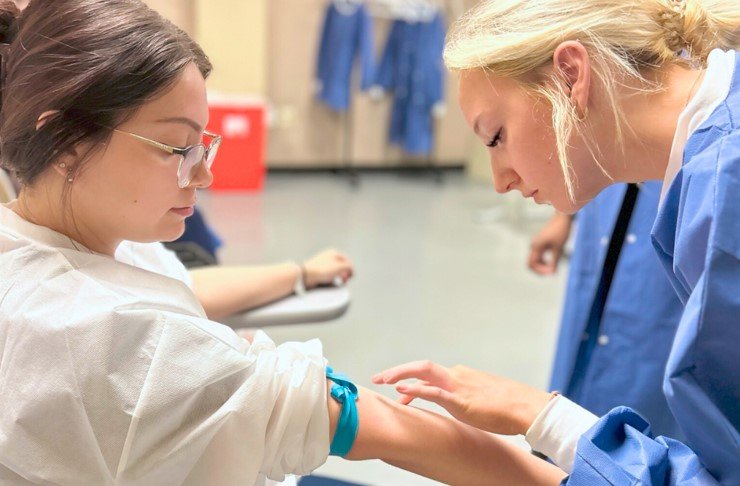Ensuring an Adequate Supply of Pediatric Prosthetics in the United States: Challenges and Solutions
Summary
- Pediatric prosthetics play a crucial role in enhancing the quality of life for children with limb differences in the United States.
- There are several challenges in ensuring an adequate supply and availability of pediatric prosthetics in hospitals across the country, including high costs, Insurance Coverage limitations, and lack of specialized Healthcare Providers.
- Addressing these challenges requires collaboration between Healthcare Providers, manufacturers, insurers, and policymakers to ensure that all children have access to the prosthetic care they need.
Introduction
Pediatric prosthetics are artificial limbs designed specifically for children with limb differences. These devices can greatly improve a child's mobility, functionality, and overall quality of life. However, ensuring an adequate supply and availability of pediatric prosthetics in hospitals across the United States is not without its challenges. In this article, we will discuss the current obstacles facing the pediatric prosthetics industry and explore potential solutions to address these issues.
Challenges in Ensuring an Adequate Supply of Pediatric Prosthetics
High Costs
One of the primary challenges in ensuring an adequate supply of pediatric prosthetics is the high cost associated with these devices. Pediatric prosthetics are typically custom-made to fit a child's unique anatomy, which can drive up production costs. Additionally, the need for ongoing adjustments and replacements as the child grows further adds to the overall expense.
Insurance Coverage Limitations
Many insurance companies have limitations on coverage for pediatric prosthetics, which can make it difficult for families to afford these devices. Some insurers may only cover a portion of the cost, leaving families to bear the remaining financial burden. This lack of comprehensive coverage can prevent children from accessing the prosthetic care they need to thrive.
Lack of Specialized Healthcare Providers
Another challenge in ensuring an adequate supply of pediatric prosthetics is the shortage of specialized Healthcare Providers with expertise in prosthetic care for children. Not all hospitals have prosthetists on staff who are trained to work with pediatric patients, leading to delays in fitting and delivery of prosthetic devices. This shortage of qualified providers can result in inconsistent care quality and limited access to prosthetic services for children in need.
Addressing the Challenges
Addressing the challenges in ensuring an adequate supply and availability of pediatric prosthetics requires a multi-faceted approach involving collaboration between Healthcare Providers, manufacturers, insurers, and policymakers. By working together, these stakeholders can improve access to prosthetic care for children across the country.
Increasing Funding and Resources
One way to address the high costs of pediatric prosthetics is to increase funding and resources for research and development in this field. By investing in innovative technologies and manufacturing processes, manufacturers can potentially reduce production costs and make prosthetic devices more affordable for families. Additionally, increasing funding for prosthetic research can lead to the development of more advanced and durable devices that require fewer replacements over time.
Advocating for Comprehensive Insurance Coverage
Advocacy efforts aimed at expanding Insurance Coverage for pediatric prosthetics can help alleviate the financial burden on families. By working with policymakers and insurers to create policies that ensure comprehensive coverage for prosthetic devices, children with limb differences can receive the care they need without facing significant out-of-pocket expenses. This can improve access to prosthetic services and enhance the overall quality of care for pediatric patients.
Training and Education for Healthcare Providers
To address the shortage of specialized Healthcare Providers in pediatric prosthetics, initiatives aimed at training and educating more professionals in this field are essential. Hospitals and medical schools can offer specialized training programs for prosthetists and other Healthcare Providers to develop expertise in pediatric prosthetic care. By investing in workforce development, hospitals can ensure that all children have access to knowledgeable and skilled providers who can deliver high-quality prosthetic services.
Conclusion
Ensuring an adequate supply and availability of pediatric prosthetics in hospitals across the United States is essential to improving the quality of life for children with limb differences. By addressing the challenges associated with high costs, Insurance Coverage limitations, and lack of specialized Healthcare Providers, stakeholders can work together to enhance access to prosthetic care for pediatric patients. Through increased funding, advocacy for comprehensive Insurance Coverage, and training and education for Healthcare Providers, the pediatric prosthetics industry can overcome current obstacles and better serve the needs of children in need.

Disclaimer: The content provided on this blog is for informational purposes only, reflecting the personal opinions and insights of the author(s) on the topics. The information provided should not be used for diagnosing or treating a health problem or disease, and those seeking personal medical advice should consult with a licensed physician. Always seek the advice of your doctor or other qualified health provider regarding a medical condition. Never disregard professional medical advice or delay in seeking it because of something you have read on this website. If you think you may have a medical emergency, call 911 or go to the nearest emergency room immediately. No physician-patient relationship is created by this web site or its use. No contributors to this web site make any representations, express or implied, with respect to the information provided herein or to its use. While we strive to share accurate and up-to-date information, we cannot guarantee the completeness, reliability, or accuracy of the content. The blog may also include links to external websites and resources for the convenience of our readers. Please note that linking to other sites does not imply endorsement of their content, practices, or services by us. Readers should use their discretion and judgment while exploring any external links and resources mentioned on this blog.

